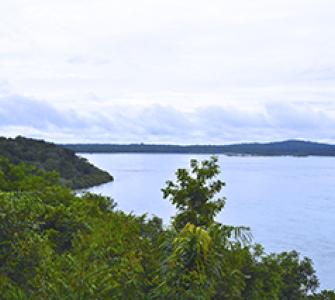Ecosystems provide a variety of ecosystem services (ES) to society. Ecosystem services are benefits people obtain from the ecosystem, like food or freshwater for example. Despite the importance of ES, they are still largely invisible in decision making, as in the case of the Tapajós River basin in Brazil.
The people living in the Tapajós basin depend on the natural ecosystem for the provision of food, clean water, raw materials, etc. These resources are crucial for their survival, well-being, and income. However, infrastructure projects planned for the region will impact these services, thereby influencing the lives of these people, as in the case of the planned São Luiz do Tapajós Hydroelectric Plant. How do we evaluate ES losses? How do ES losses influence the lives of the local population and environment?
In this context, CSF conducted a valuation study of some of the ES to be impacted by the construction of the São Luiz do Tapajós Hydroelectric Plant, in order to understand how these impacts would be reflected in economic losses for the local population. The goals of this study are to raise awareness around how this construction could interfere in the livelihoods of municipalities and riverside, rural and indigenous communities, and improve the decision-making process for local and regional development.
The following groups of ES were analyzed:
- Provisioning ES, such as food, wood and a variety of non-timber products that are essential to the livelihood and income of the local population;
- Water, which has many uses; and
- Maintaining global climate via CO2e storage, which has overall benefits, but also an important role in national targets and international agreements.
We found that economic losses of the São Luiz do Tapajós dam would seriously impact local well-being and, in some cases, threaten residents’ survival. More broadly, these results reinforce the need to include social and environmental costs in assessing the feasibility and design of dams and other major development projects. To learn more, please download the policy brief or full publication.
You can also read more about the suspension of licensing for the dam in 2016, and our dissemination activities.
This project was part of the Biodiversity Understanding in Infrastructure and Landscape program (BUILD), a project of the United States Agency for International Development (USAID).
Photo: Corredeiras de São Luis do Tapajós, Camila Jericó-Daminello.

